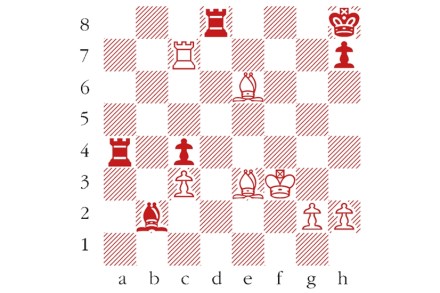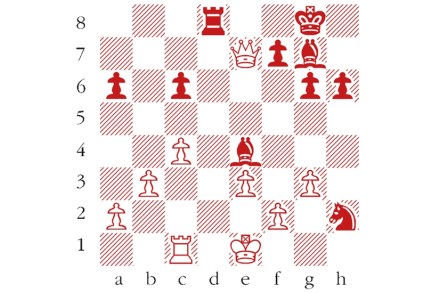No. 645
Black to play. Kosteniuk–Koneru, Skolkovo Grand Prix, 2019. The obvious 1…Kg3 fails to 2 Rg5+ Kf4 3 Rg4+. Losing the pawn looks inevitable, but Koneru found the only move to save herself. What did she play? Answers should be emailed to chess@spectator.co.uk by 22 March. There is a prize of £20 for the first correct




















